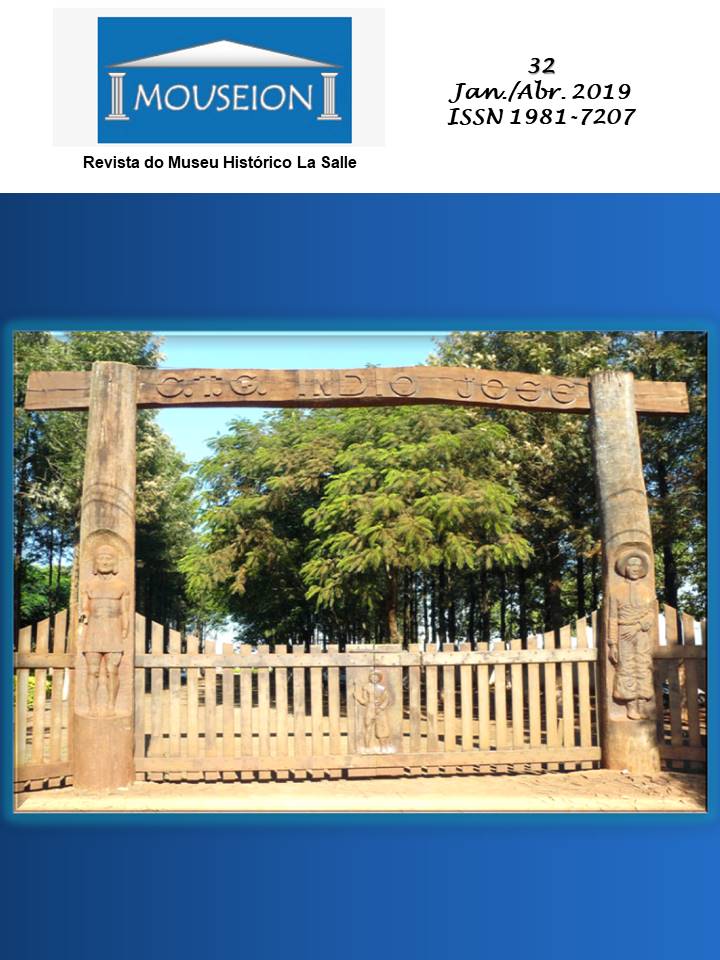The syncretism in the sacred art of the Jesuitic Missions of the guarani: Holy Indian and Indian Holy
DOI:
https://doi.org/10.18316/mouseion.v0i32.5437Keywords:
Syncretism, Religious art, Jesuit Missions, GuaraniAbstract
The Jesuit Missions were very peculiar colonial spaces, whose interaction between the Europeans and the Indians were oriented by the catechization and evangelization of the communities, in an environment of order, work and prayer. The Company of Jesus, in its missionary task, carried with it important concepts of development, such as architecture, sculpture, carpentry and music, which provided a rich material scene during the period of the Missions’ apogee. In this synergy between the apostolic catholic Christianity and the imaginary Guarani, the sacred art developed during the XVII and XVIII centuries in these spaces finds a differentiated meaning, since endowed with enormous syncretism and fusion of local elements - especially the phenotypic ones, that resignified the aesthetic expression until then in force for the representation of the sacred images of Jesus, Mary and the Catholic saints. It is important to point out that the pieces were made by the Guarani, whose techniques of sculpture, statuary and polychromy were taught to them by the Jesuit priests, so that such representations brought them closer to the new religion that had been transmitted to them. The period coincides with the Catholic Counter-Reformation and with the rise of the Baroque movement in art, the Church’s energetic reaction to the Protestant Reformation, which, in addition to multiplying the number of faithful around the world, with the conversion - imposed or accepted - of great part of America in Christian territories, has still significantly altered the aesthetic standards of art in the redefining new continent. Thus, from the study of these forms of representation of the sacred by the indigenous ‘missioners’, the present article deals with the syncretic representation in the sacred art of the Missions.
Downloads
Published
Issue
Section
License
Authors must submit their manuscripts to be published in this journal agree with the following terms:
Authors maintain the copy rights and concede to the journal the right of first publication, with the paper simultaneously licensed under the License Creative Commons attribution that permits the sharing of the paper with recognition of authorship and initial publication in this journal.
Since the articles are presented in this journal of public access, they are of free use, with their own attributions for educational and non-commercial purposes.


